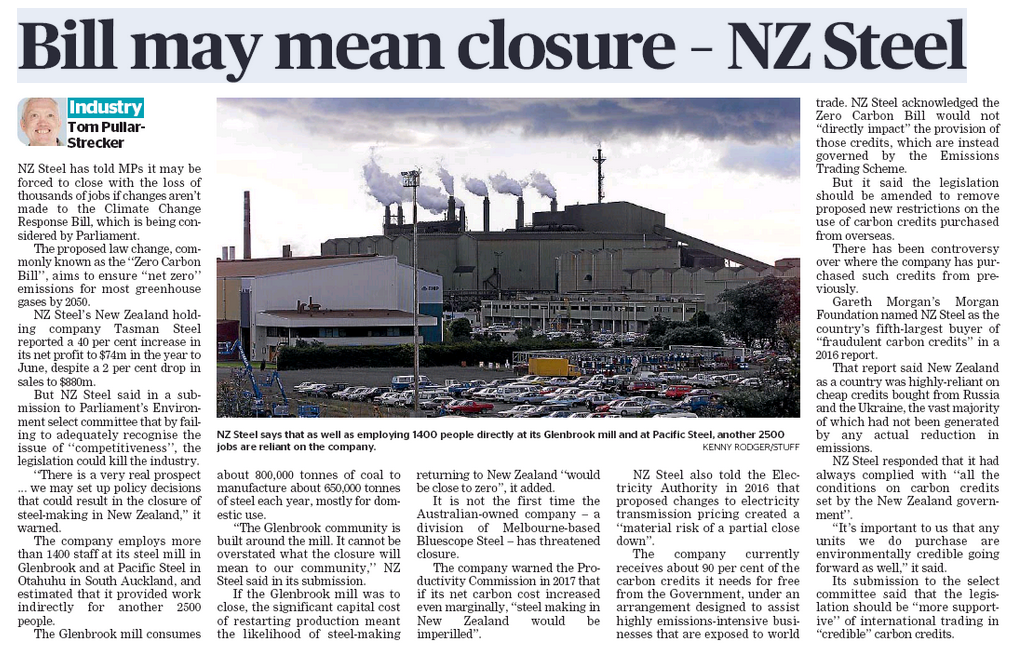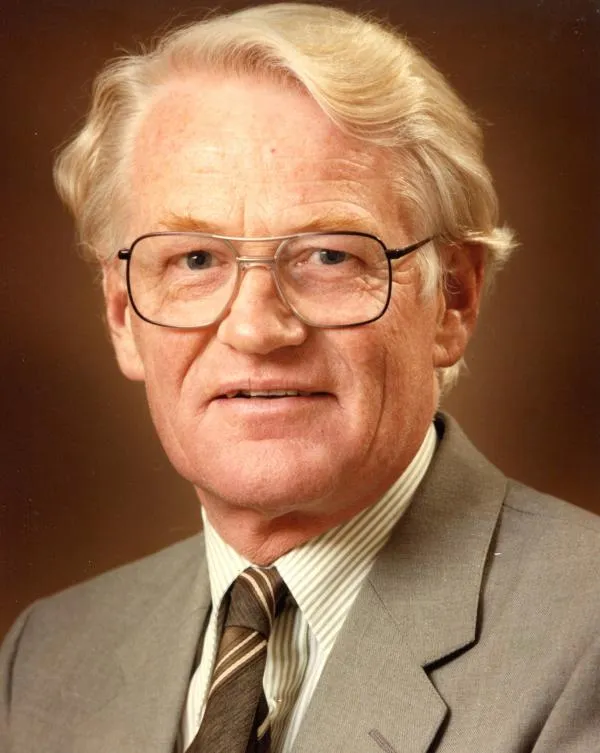On March 5th 2019 retiring National MP Nathan Guy, rose in the House of Parliament to ask a question of government minister Damien O’Connor: “Does he stand by his statement last year to Rural News that when it comes to increasing costs on farmers, they should—and I’ll quote—”get used to it”?
O’Connor replied: “Our government is clearly committed to increase water quality, to commit to climate change international obligations…”
That very same, sad, day one of New Zealand’s very best scientists escaped this mortal prison. David Kear was a genius, a pragmatic, problem-solving genius. London-born, he became interested in New Zealand during time spent aboard HM(NZ)S ‘Achilles’ 1942-44, and interested in geology from time spent in a Welsh coal-mine ‘never wishing to go underground again’. He would emigrate to God’s Own Country with his beautiful new wife after the war.
On a ‘hunch’ he almost single-handedly launched New Zealand’s steel industry after years of efforts by teams of other talented geotechnical experts had proved fruitless. We owe him plenty, just last year our exports of steel totalled nearly half-a-billion dollars, despite our current prime minister’s attempts to disadvantage us in the field.
Mr Kear was recognised for his ability during his lifetime, rising to become head of the internationally recognised DSIR. He was much more than fossil analysist or cross-strata projection theorist, much more involved than our far-removed department-heads of today; he felt science on, and in, the world that surrounds us.
David held the view that ‘global-warming’ theory was an abuse of the scientific method, and he held those views strongly, as strongly as his hunch
that such a deposit [of ironsand with over 80 million tonnes of high-grade concentrate close to suitable transport] might be found on a raised interglacial terrace, but be covered by recent dune-sand.
His logic proved correct, and a suitable deposit was subsequently proved up by drilling at Waikato North Head. Finding a suitable site with solid foundations for the steel mill itself was more difficult because of the widespread presence of peat in the Waikato Valley. Using geological maps, David found a suitable site at Glenbrook on old lava flows.
In some ways David Kear is New Zealand’s Benjamin Franklin; using his accumulated knowledge and individual genius to the betterment of every single person in this society, asking nothing in return.
He became strongly disabused of ‘climate science’ as early as 1985:
“ I noted the words “Global Warming” appearing increasingly in paper titles, and sensed a growing number of adherents. Those latter arranged a first-ever “Conference on Global Warming” in Vienna in 1985. Unlike most such meetings, where a communiqué summarising achievements was released on the final day, the full results of this one were delayed for over 2 years.
When they did appear (front page, NZ Herald, two days before Christmas 1987) a World Declaration included “Overseas scientists have estimated that the seas around New Zealand will rise by up to 1.4 m in the next 40 years”. That article concentrated on the massive consequent problems, caused by our carbon dioxide (CO2) emissions, but gave no adequate supporting science. That rate of rise was equivalent to 3,500 mm/century, 28 times faster than our 125mm. Hence we stupidly ignored it, thinking no one could possibly believe it. But the World did believe, and the Global Warming mirage was born. Had 3,500been true, sea level should have risen by almost 1 m by today – it hasn’t, not even closely.”
David was deeply concerned, and extremely disappointed, by the half-truths on display:
“There can be no doubt that to ensure their 1987 World Declaration made the greatest impact, they published the maximum value – contravening the most sacred rule of acceptable science: Thou shall not publish items for monetary, political, or personal gain that are not clear un-biased un-inflated truths.”
On Wednesday, August 14th NZ Steel announced it may be impractical to consider future steel-making in New Zealand due to its reliance on coal which not only fuels the plant but is vital to the steel-making process; reliant as it is on the carbon-rich fuel’s chemical interaction with ore to produce a high-quality resultant product. Anyone who understands the important difference between iron and steel knows this already but the general public and the current government have no clue whatsoever. Hence:

David would be dismayed that the industry he helped found and which has helped so many towards homes, livelihoods and opportunities, would be disintegrated with 2,500 (at least) jobs lost for mere political opportunism and make-believe science manufactured to feed a media narrative.
It’s an indictment on society that the words of such a talented man, a man we truly owe so much for his contribution, are so hard to find (funny, that) but you can read them for yourself here if you dare, (you may be discouraged by several banners warning of ‘harmful’ content).
Rest in peace; humble Mr David Kear. The world, especially this part of it, is worse-off without you.
I salute you.









